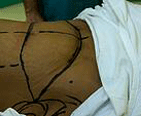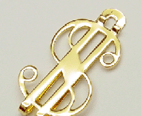 Prices for plastic surgery depend not only on the type of the procedure performed but also on the area, country, region and clinic. Usually prices for cosmetic surgery in Western European countries are about 20 % to 30 % lower than the same prices in the USA. Costs for plastic surgery in Eastern European countries are even more attractive to the patients. These prices are usually 40 % to 70% lower comparing to the same procedures in the US.
Prices for plastic surgery depend not only on the type of the procedure performed but also on the area, country, region and clinic. Usually prices for cosmetic surgery in Western European countries are about 20 % to 30 % lower than the same prices in the USA. Costs for plastic surgery in Eastern European countries are even more attractive to the patients. These prices are usually 40 % to 70% lower comparing to the same procedures in the US.
Plastic surgery cost
People might be concerned about the quality of the same cosmetic procedures in Europe and USA. Even though the difference in costs is comparatively big, patients gain the same exclusive quality and excellent service both in the United States and Europe. The same surgical procedures usually cost less in Europe due to lower specialist’s charges and lower operating room maintenance fees.
Since plastic surgery costs differ significantly, a new type of tourism, called a healthcare tourism, has developed. A lot of people living in the countries, where plastic surgery costs more, travel to countries, where cosmetic surgery prices are lower. It is quite beneficial, since money left from the difference in prices can cover transportation, accommodation and leisure expenses. Moreover, if everything is wisely organized, some money can be left on a side. And people, who anyway are planning on traveling to Europe, can combine both traveling excitement and additional changes in their appearance and life.
Plastic surgery in the USA and Europe
Plastic surgery in Europe and the United States of America differ not only in prices for the procedures but also in the professional quality of surgeons. This does not mean that plastic surgeons in Europe are less experienced, skilled or have a lower education. In the United States surgeons tend to specialize in one particular sphere or procedure and, hence, the same doctor cannot perform several different procedures. For example, if a cosmetic surgeon specializes in abdominoplasty or breast surgery, the same specialist will not agree on performing facelift . Whereas in Europe, plastic surgeons are offering numerous services of the high quality and, therefore, the patient can get both a facelift and tummy tuck at the same clinic. This is even convenient and time-effective.
If you are considering having a plastic surgery abroad, you might want to compare the prices and services in the United States and Western or Eastern European countries. There are a few travel agents, who organize healthcare travels, and you might want to use their advice or choose their services in organizing your travel. Another possibility is to look for it on the net and this article is a possibility to compare prices for cosmetic surgery in USA and Europe.
Prices, listed on this site, include the surgeon’s charge, operating theatre fee, anesthesia fee and implant fee. If you are considering having plastic surgery and you are inquiring for the price of a particular procedure, make sure you ask for total cost. It is important, since very often only surgeon’s fee is told on the phone or given on a specific internet site, and when you get a check you might experience nothing less than a huge shock.
Prices, listed below are average for cosmetic procedures in accredited surgeon’s offices, accredited surgery clinics, accredited hospitals and surgery centers. Costs for cosmetic surgery are about the same in different areas of USA. It might only be more expensive to get a cosmetic surgery procedure in the States of California or New York, Where prices for the same procedure might be by 50% higher than in other regions.
| Procedures | Average fees in USA | Fees in Western Europe | Fees in Eastern Europe |
| Blepharoplasty | $4000 – $5,500 | $3000 | $2000 |
| Botox | $200 – $400 per area | $200 | $100 |
| Breast augmentation (saline) | $5000 – $6,500 | $4,500 | $3,500 |
| Breast augmentation (silicone) | $6000 – 8000 | $5000 | $4000 |
| Breast elevation | $5000 – $6000 | $4,500 | $4000 |
| Breast reduction | $6000 – $8000 | $5000 | $4,500 |
| Cheek or chin implants | $3000 – $4,500 | $2,500 | $2000 |
| Deep chemical peel | $3,500 – $5000 | $2000 | $1,500 |
| Facelift | $7000 – $9000 | $6000 | $5,500 |
| Forehead lift | $3,500 – $5000 | $3000 | $2,500 |
| Laser hair removal | $300 – $800 per area | $250 – $800 | $200 – $600 |
| Laser eye surgery | $3,500 – $4000 | $2,500 – $3000 | $2000 |
| Lip augmentation | $600 – $2000 | $500 – $1,500 | $1000 |
| Liposuction (1 area) | $2,500 – $4,500 | $2,500 | $2000 |
| Liposuction (3 areas) | $5,500 – $7000 | $5000 | $4000 |
| Liposuction (4 areas) | $8000 – $10000 | $6,500 | $5,500 |
| Male breast reduction | $5000 – $6000 | $4,500 | $4000 |
| Rhinoplasty | $5000 – $6000 | $4,500 | $4000 |
| Pectoral implants | $6000 – $7000 | $5,500 | $5000 |
| Otoplasty | $3000 – $4,500 | $2,500 | $2000 |
| Tummy tuck | $6000 – $8000 | $5,500 | $5000 |
These are average prices listed above. They might vary in $500-1,000. Bear in mind, that the cost of a surgical procedure will be determined by the surgeon on your initial consultation. Finally, saving some money is a great thing but sometimes you might want to get a procedure for a higher price rather than risking your health or even life. Remember, your health has the greatest value.
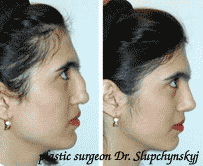 African American nasal anatomy differs from others in skin thickness and abundant fibrofatty tissue. Nasal bridge consists of short bones, and is flat and wide. The tip of the nose is usually bulbous and of minimal definitions. The nostrils are flaring and horizontal. These are the features that individuals of African American decent want to correct but not change completely in order to keep their racial characteristics.
African American nasal anatomy differs from others in skin thickness and abundant fibrofatty tissue. Nasal bridge consists of short bones, and is flat and wide. The tip of the nose is usually bulbous and of minimal definitions. The nostrils are flaring and horizontal. These are the features that individuals of African American decent want to correct but not change completely in order to keep their racial characteristics. There are a lot of beauty products that can help you regain youthful looks with
There are a lot of beauty products that can help you regain youthful looks with 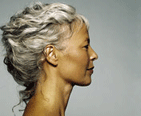 Also, the skin of the face may feel numb and it is quite usual after the procedure. This feeling should fade away in a several weeks or months.
Also, the skin of the face may feel numb and it is quite usual after the procedure. This feeling should fade away in a several weeks or months.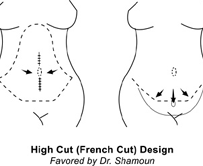 Many people all over the world suffer from fat accumulation on their bellies. This accumulation may be inherited or gained, due to overweight or after pregnancy. People try to change this by excessive exercise and diet. Even though people lose weight they might find themselves disappointed about not having their abdomens look flat. This gives an unbalanced look due to protruding belly because of fatty tissue accumulation on it. Luckily,
Many people all over the world suffer from fat accumulation on their bellies. This accumulation may be inherited or gained, due to overweight or after pregnancy. People try to change this by excessive exercise and diet. Even though people lose weight they might find themselves disappointed about not having their abdomens look flat. This gives an unbalanced look due to protruding belly because of fatty tissue accumulation on it. Luckily, 